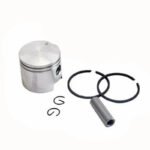
Agriculture is the lifeblood of Sri Lanka’s economy, supporting millions of livelihoods and contributing significantly to the nation’s GDP. However, even experienced plantation managers, tea estate owners, rubber farmers, and small-scale growers can fall prey to common farming mistakes that lead to reduced yields, wasted resources, and financial losses.
The good news? Many of these errors are preventable with the right knowledge and tools. In this article, we’ll explore the most frequent farming mistakes, provide practical solutions to avoid them, and introduce resources like vagaa.lk to help you streamline your operations. Let’s dive in!
Why Identifying Farming Mistakes Matters
Farming is a complex process influenced by countless variables—soil health, weather patterns, pest control, labor management, and more. Even minor mistakes can have a domino effect, leading to poor crop quality, lower yields, and financial strain.
By identifying and addressing these common errors, you can:
- Improve resource efficiency (water, fertilizers, labor).
- Enhance soil health and crop quality.
- Increase profitability and sustainability.
- Build resilience against challenges like climate change and market fluctuations.
Awareness is the first step toward success. Let’s break down the top farming mistakes and how to avoid them.
Top 7 Common Farming Mistakes and How to Avoid Them
Here are the most frequent errors made by farmers in Sri Lanka—and actionable tips to prevent them:
Mistake #1: Poor Soil Management
- Problem: Over-reliance on chemical fertilizers, neglecting soil testing, and ignoring signs of nutrient depletion.
- Impact: Declining soil fertility, reduced crop yields, and long-term damage to farmland.
Preventive Tip:
- Conduct regular soil tests to assess nutrient levels and pH balance.
- Use organic fertilizers and compost to enrich soil naturally.
- Practice crop rotation to prevent nutrient depletion and reduce pest buildup.
Mistake #2: Inadequate Irrigation Practices
- Problem: Overwatering or underwatering crops, leading to water wastage, root rot, or stunted growth.
- Impact: Poor plant health and inefficient use of precious water resources.
Preventive Tip:
- Install smart irrigation systems or moisture sensors to monitor soil hydration levels.
- Water crops early in the morning or late in the evening to minimize evaporation.
- Use drip irrigation to deliver water directly to plant roots, reducing waste.
Mistake #3: Ignoring Pest and Disease Control
- Problem: Delayed action on pest infestations or diseases, resulting in widespread crop damage.
- Impact: Significant yield losses and increased costs for recovery.
Preventive Tip:
- Implement Integrated Pest Management (IPM) techniques, combining biological, cultural, and chemical controls.
- Regularly inspect crops for early signs of pests or diseases.
- Use eco-friendly pesticides and natural repellents to minimize environmental impact.
Mistake #4: Improper Crop Selection
- Problem: Choosing crops unsuitable for the local climate, soil type, or market demand.
- Impact: Low yields, poor-quality produce, and difficulty selling at competitive prices.
Preventive Tip:
- Research crop suitability based on regional conditions (e.g., rainfall, temperature, soil type).
- Consult agricultural extension officers or experts for guidance.
- Consider market trends and consumer preferences before planting.
Mistake #5: Lack of Record Keeping
- Problem: Failing to track expenses, yields, and other critical data, making it hard to identify inefficiencies.
- Impact: Poor decision-making and missed opportunities for improvement.
Preventive Tip:
- Maintain detailed records using mobile apps, spreadsheets, or notebooks.
- Track inputs (seeds, fertilizers, labor), outputs (yields), and financial performance.
- Analyze data regularly to identify patterns and areas for optimization.
Mistake #6: Overlooking Labor Management
- Problem: Poor workforce planning, leading to inefficiencies, delays, and low morale among workers.
- Impact: Reduced productivity and higher operational costs.
Preventive Tip:
- Train workers on best practices and assign clear roles and responsibilities.
- Use time-tracking apps or tools to monitor labor efficiency.
- Provide fair wages and incentives to boost motivation and retention.
Mistake #7: Neglecting Market Trends and Pricing
- Problem: Selling produce at low prices due to lack of market knowledge or negotiation skills.
- Impact: Reduced income and financial instability.
Preventive Tip:
- Stay updated on market trends through platforms like vagaa.lk , which connects farmers with buyers and provides pricing insights.
- Join farmer cooperatives to negotiate better prices collectively.
- Diversify your crops to reduce dependency on a single market.
Real-Life Examples of Mistakes and Lessons Learned
Let’s look at some real-world examples of farming mistakes and how they were resolved:
1 Example: A Tea Estate Manager’s Soil Crisis
- Challenge: Declining tea yields despite consistent fertilizer application.
- Solution: Conducted soil tests and discovered nutrient imbalances. Switched to organic fertilizers and implemented crop rotation.
- Outcome: Improved soil health and higher-quality tea leaves, boosting export revenue.
2 Example: A Rubber Farmer’s Water Woes
- Challenge: Overwatering caused root rot, leading to significant latex production losses.
- Solution: Installed moisture sensors and switched to drip irrigation.
- Outcome: Healthier plants and increased latex output.
3 Example: A Paddy Field Owner’s Pest Problem
- Challenge: Delayed pest control allowed leafhoppers to devastate an entire field.
- Solution: Adopted IPM techniques and used drones for targeted pesticide application.
- Outcome: Prevented further damage and improved overall yield.
Tools and Resources to Prevent Farming Mistakes
To avoid common errors, consider investing in these tools and resources:
Soil Testing Kits
- Affordable and easy-to-use kits to monitor soil health and nutrient levels.
Smart Irrigation Systems
- Automated systems that optimize water usage and prevent wastage.
Mobile Apps for Farmers
- Platforms like vagaa.lk connect farmers with buyers, provide market insights, and help track expenses.
Pest Control Equipment
- Tools like sprayers, traps, and drones available at lakparts.com for efficient pest management.
Steps to Implement Preventive Measures on Your Farm
Ready to take action? Follow these steps to avoid common farming mistakes:
- Assess Your Current Practices: Identify areas where improvements are needed (e.g., irrigation, pest control).
- Invest in Tools and Technologies: Explore affordable solutions tailored to your farm’s needs.
- Educate Yourself and Your Team: Attend workshops, read guides, and stay informed about best practices.
- Monitor Results: Track performance metrics and adjust strategies as needed to maximize ROI.
Conclusion: Success Starts with Awareness
Avoiding common farming mistakes is not just about fixing problems—it’s about building a sustainable and profitable future for your farm. By adopting preventive measures, leveraging technology, and staying informed, you can overcome challenges and achieve long-term success.
Take the first step today. Visit lakparts.com to explore tools and resources designed to help you avoid farming errors. For market insights and buyer connections, check out vagaa.lk . Together, let’s transform Sri Lankan agriculture into a model of efficiency and innovation.
💬 Have You Made Any of These Farming Mistakes? Share your experiences or tips in the comments below. Let’s learn from each other and grow together!
🔗 Explore Tools to Avoid Farming Mistakes at lakparts.com
🔗 Connect with Buyers and Stay Updated at Vagaa.lk for innovative tools tailored to Sri Lanka’s unique needs.




